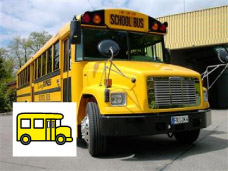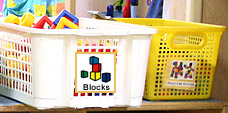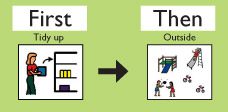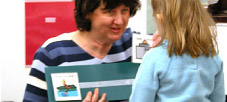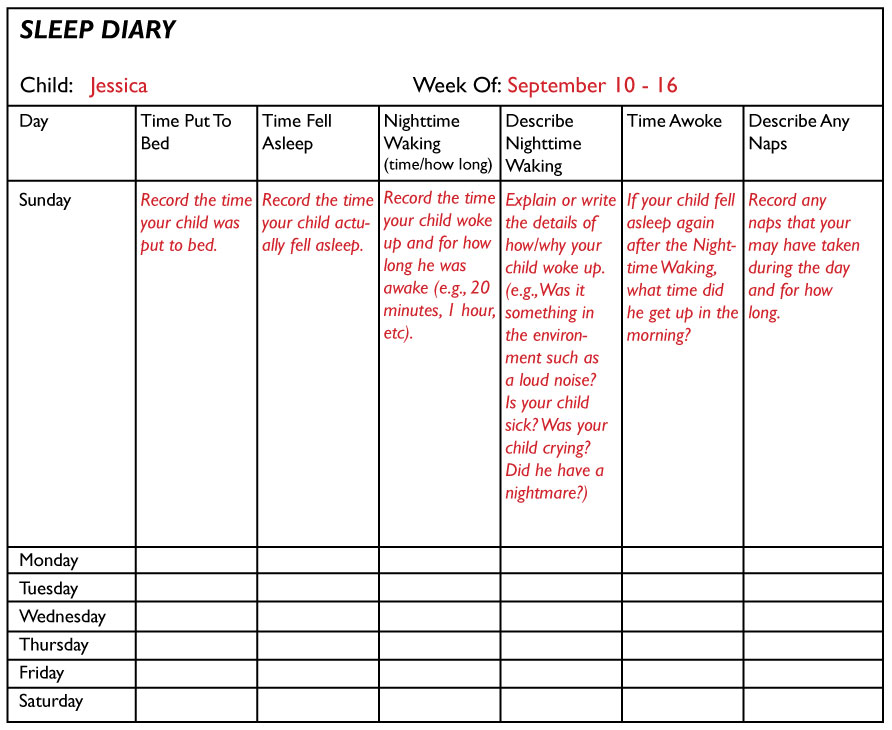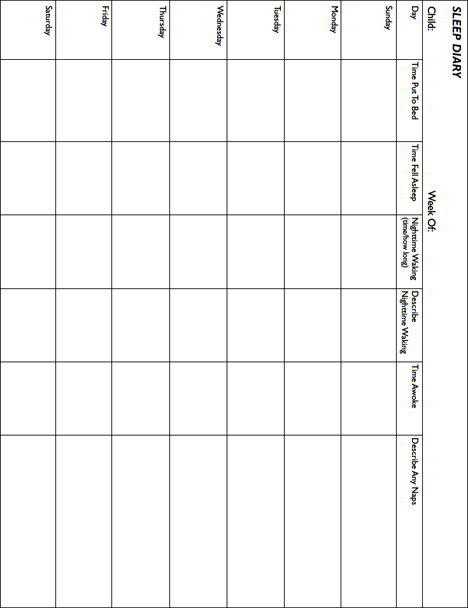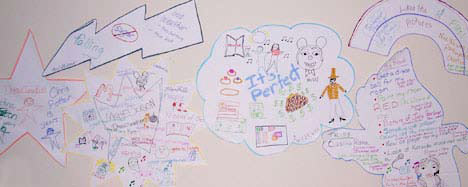There are a various funding options available from different levels of government and private organizations. They are available to families with children with special needs ranging from developmental support needs to physical/mobility needs. The general purpose of a program that provides funding is to compensate or financially assist families for expenses, services, or devices related to their child’s disability, and to give families a tax break.
Note: Some of the following funding options are based on a family’s income. Consider applying for all funding options regardless of your income as many of these applications take several months to process and your family’s financial situation may change by the time your applications are officially reviewed.
Funding available through the Government of Canada:
- Disability Tax Credit
- Child Disability Benefit
- Registered Disability Savings Plan
- Canada Child Tax Benefit
- Universal Child Care Benefit
Funding available through the Government of Ontario:
- Assistance for Child with Severe Disabilities
- Special Services at Home Program
- Assistive Devices Program
- Easter Seals Society Ontario
- Children in Need of Dental Treatment
- Ontario Child Benefit
Alternate Funding Sources and Charitable Organizations
- Jennifer Ashleigh Foundation
Government of Canada Funding:
Disability Tax Credit (DTC)
What is the Funding?
Revenue Canada offers the Disability Tax Credit for individuals with disabilities. The disability amount is a non-refundable tax credit used to reduce income tax payable on your return. This amount includes a supplement for persons under 18 at the end of the year.
If a child under 18 is eligible for the disability amount, that child is also eligible for the Child Disability Benefit, an amount available under the Canada Child Tax Benefit. See below for more details.
Who is Eligible?
The Disability Tax Credit is limited to individuals who have a severe and prolonged impairment in mental or physical functions. One of the following must apply:
- The individual is blind, even with the use of corrective lenses or medication;
- The individual is clearly restricted his or her ability to perform a basic activity of daily living;
- The individual is significantly restricted in his or her ability to perform two or more basic activities of daily living, and the cumulative effect of these significant restrictions is equivalent to having a marked restriction in a single basic activity of daily living;
- The individual must dedicate a certain amount of time specifically for life-sustaining therapy, but does not include implanted devices or special programs of diet, exercise, hygiene, or medication.
How Do I Apply?
Begin by completing the Disability Tax Credit Form T2201. The form can be obtained through your local Tax Services Office or at the Canada Customs and Revenue website.
Keep in mind that Part B of the form needs to be filled out by a medical practitioner. This section allows the medical practitioner to provide details about the person’s disability.
Who Do I Contact for More Information?
Contact your local Tax Services Office or visit the Canada Customs and Revenue web site: www.cra-arc.gc.ca
You can also call 1-800-959-2221 for information and/or applications.
Child Disability Benefit (CDB)
What is the Funding?
The Child Disability Benefit is a tax-free benefit of up to $2,504 per year ($208.66 per month) for families who care for a child under age 18 with a severe and prolonged impairment in mental or physical functions.
The CDB amount is calculated according to your base income. The CDB is paid monthly to the Canada Child Tax Benefit (CCTB) eligible individuals. (See below for more details on the Canada Child Tax Benefit)
Who is Eligible?
Families who are eligible for Canada Child Tax Benefit for a child will receive the CDB only if the child also qualifies for the Disability Tax Credit.
Not all children with disabilities will qualify for this benefit. Only children with severe and prolonged disabilities. See the Disability Tax Credit Certificate info sheet to review the eligibility criteria.
How Do I Apply?
Begin by completing the Form T2201, the Disability Tax Credit Certificate.
You must get this form completed and signed by a qualified practitioner (e.g., medical doctor, speech and language pathologist). Send the completed and signed form to your tax centre.
The Canada Revenue Agency (CRA) will determine whether or not you are eligible to receive the child disability benefit. The CRA processes the forms throughout the year, so you do not have to wait until it’s time to file your tax return to submit your form.
You must also apply for the Canada Child Tax Benefit, if you have not done so already.
Who Do I Contact for More Information?
Contact your local Tax Services Office or visit the Canada Customs and Revenue web site: www.cra-arc.gc.ca
You can also call 1-800-959-2221 for information and/or applications.
Registered Disability Savings Plan (RDSP)
What is the Funding?
The RDSP is a long-term savings plan to help Canadians with disabilities and their families save for the future. The “beneficiary” of the RDSP is the person who will receive the money in the future. To help you save, the Government pays a matching grant of up to $3,500, depending on the amount contributed and your family income. The Government also pays a bond of up to $1,000 a year into the RDSPs of low-income and modest-income Canadians.
Who is Eligible?
You should consider opening a Registered Disability Savings Plan (RDSP) if you have a long-term disability and are
How Do I Apply?
Apply through financial organizations(banks) that offer the Registered Disability Savings Plan (RDSP), grant and bond.
Who Do I Contact for More Information?
Contact your local Tax Services Office or visit the Canada Customs and Revenue web site: www.cra-arc.gc.ca
Canada Child Tax Benefit (CCTB)
What is the Funding?
The Canada Child Tax Benefit (CCTB) is a tax-free monthly payment made to eligible families to help them with the cost of raising children under age 18.
The CCTB may include the Child Disability Benefit (CDB), a monthly benefit providing financial assistance for qualified families caring for children with severe and prolonged mental or physical impairments.
Also included with the CCTB is the National Child Benefit Supplement (NCBS), a monthly benefit for low-income families with children. The NCBS is the Government of Canada’s contribution to the National Child Benefit, a joint initiative of federal, provincial, and territorial governments, and First Nations.
Who is Eligible?
To get the CCTB, you must meet all the following conditions:
- you must live with the child, and the child must be under the age of 18;
- you must be the person who is primarily responsible for the care and upbringing of the child;
- you must be a resident of Canada;
- you or your spouse or common-law partner must be a Canadian citizen, a permanent resident, a protected person, or a temporary resident who has lived in Canada for the previous 18 months.
How Do I Apply?
Generally, you should apply for the CCTB as soon as possible after:
- your child is born;
- a child starts to live with you;
- you become a resident of Canada.
Even if you feel you will no longer qualify for the CCTB because your family net income has increased, you should still apply. The Tax Service office recalculates your entitlement every July based on your family’s net income for the previous year.
To apply for the CCTB, complete Form RC66, Canada Child Tax Benefit Application
Who Do I Contact for More Information?
Contact your local Tax Services Office or visit the Canada Customs and Revenue web site: www.cra-arc.gc.ca
You can also call 1-800-959-2221 for information and/or applications.
Universal Child Care Benefit (UCCB)
What is the Funding?
The Universal Child Care Benefit helps families balance work and family by supporting their child care choices through financial assistance.
This benefit of $100 a month — up to $1,200 a year per child — is paid to parents for all children under six years of age. Payments are made directly to parents so that they can choose the child care that is best for their children and their family’s needs.
The Universal Child Care Benefit is in addition to existing federal programs, such as the Canada Child Tax Benefit, the National Child Benefit Supplement and the Child Care Expense Deduction. This new benefit does not affect the benefits families receive under these programs.
The only exception is that the Canada Child Tax Benefit supplement, a small monthly amount previously received by some families, has been rolled into or combined with the new Universal Child Care Benefit.
Who is Eligible?
All Canadian families with children under six are eligible, regardless of income or the type of child care they choose.
This benefit is taxable in the hands of the lower-income spouse.
How Do I Apply?
Enrolment for the Universal Child Care Benefit is processed through the Canada Child Tax Benefit (CCTB) application. If you are already receiving the Canada Child Tax Benefit, you do not need to apply for the Universal Child Care Benefit. If you are not currently receiving the Canada Child Tax Benefit, you can enroll by submitting a completed Canada Child Tax Benefit application.
Application forms are available on the Canada Revenue Agency website at www.cra-arc.gc.ca
Who Do I Contact for More Information?
For more information on how to receive the Universal Child Care Benefit, visit the Canada Revenue Agency web site at www.cra.gc.ca/uccb or call toll-free at 1-800-387-1193 or TTY at 1-800-665-0354.
Government of Ontario Funding:
Ontario Child Benefit
The Ontario Child Benefit is a non-taxable income-tested monthly benefit paid to low- to moderate-income families with children under 18 years of age. It is paid to all eligible recipients whether they work or not.
Who is Eligible?
Depending on your family income, you could qualify if you:
- are the primary caregiver of a child under 18 years of age
- are a resident of Ontario
- have filed your tax return for the most recent year – and so has your spouse or common-law partner, if you are married or in a common-law relationship
- have registered your child for the federal Canada Child Tax Benefit
How Do I Apply?
If you are eligible, the Ontario Child Benefit will be included with your Canada Child Tax Benefit and National Child Benefit Supplement monthly payments.
Who Do I Contact for More Information?
For specific information about your payment, contact the Canada Revenue Agency toll-free at 1-800-387-1193
Assistance for Children with Severe Disabilities (ACSD)
What is the Funding?
ACSD provides help to parents to assist with some of the extra costs of caring for a child who has a disability. In order to qualify for this program, financial and medical criteria must be met.
Financial assistance ranges from $25 to $430 per month depending on the family’s gross annual income and the number of other children in the family. A child is also eligible for a dental card (basic dental coverage), and a drug card for prescription drugs.
In addition, the program may help parents with extraordinary costs related to a child’s condition (e.g., travel to doctors and hospitals, special shoes and clothing, parental relief, wheelchair repairs, hearing aid batteries, and financial assistance for basic dental care, drugs, eyeglasses and hearing aids).
Who is Eligible?
Child must be under 18 years of age and live at home with a parent or a legal guardian.
The income of a family will be evaluated to determine qualification.
The child must have a severe disability that results in a functional loss.
Extraordinary costs must be present which are incurred directly as a result of a disability.
How Do I Apply?
Obtain an application form from the nearest Ministry of Children, Community and Social Services (MCCSS) Regional Office.
A Special Agreements Officer (SAO) will review your application and contact you if further information is required. If this is the family’s first time applying, a SAO will make a home visit to meet the child and family and review the information on the application.
Who Do I Contact for More Information?
Contact your local Ministry of Children, Community and Social Services Regional Office. Local offices are listed in the blue pages of the telephone book.
Visit the Ministry of Children, Community and Social Services website at www.children.gov.on.ca
Special Services at Home (SSAH)
What is the Funding?
The Special Services at Home (SSAH) program helps children under the age of 18 with developmental and/or physical disabilities to live at home with their families by providing funding on a time-limited basis to address individual needs. With this funding, families can purchase supports and services that are not available elsewhere in the community.
Each family has a unique set of circumstances. You will need to describe your family’s needs, establish your own goals and indicate the type of assistance you need. For example, funding may be used to access:
- Personal growth and development to help the child learn new skills and abilities, such as improving their communication skills and becoming more independent
- Family relief and support to provide respite to the family – families receive support to pay for services that will provide respite/relief
Temporary Expansion of Admissible Expenditures
To better support children with special needs and their families during the COVID-19 pandemic, eligible expenditures in the programs have been temporarily expanded to support greater flexibility for families. The following expenditures are temporarily admissible until further notice:
- Sensory items to support children and youth who rely on sensory items to alleviate anxiety/stress and/or support any clinical or behavioural plans
- Technology to provide children and youth the means and ability to stay safe, connected, and engaged at home
- Items to support home-based recreation and fitness activities
- Personal Protective Equipment and Supplies
- Essential Service Delivery Fees
- Behavioural Support Plans and Interventions
- Ability to hire (non-primary caregiver) family members or neighbours/friends to provide respite
Families who receive SSAH funding can submit eligible expenses for reimbursement through mail, email, fax or through MyDirectPlan.com, a free direct funding management tool.
Who is Eligible?
Children with a developmental disability and/or physical disability (or their families) can apply for this funding if they:
- live in Ontario
- are under the age of 18
- are living at home with the family, or
- if not living at home with their family, are not receiving residential support funded by a government source.
How Do I Apply?
The program is funded and managed by the Ministry of Children, Community and Social Services.
- Review the program guidelines and the April 2020 addendum for more information about temporary changes to eligible expenses.
- Download and complete an application form.
- Attach a medical statement or psychological assessment to your application. It should describe the disability and explain why you need the services and their projected cost.
- Mail the completed application form and the medical assessment to your nearest regional office.
Important Additional Information
- SSAH wait time varies per region and within the fiscal year
- It is important to keep a copy of your completed application for your records
- It can be useful to include a letter of support from your family doctor or consultants/therapists currently working with your child to describe their needs and how funding can benefit the child
- There is a range of funding which is needs based
Who Do I Contact for More Information?
Contact the Ministry of Children, Community and Social Services to find your regional office.
Assistive Devices Program (ADP)
What is the Funding?
The Assistive Devices Program is administered by the Operational Support Branch of the Ontario Ministry of Health and Long-Term Care. The objective of ADP is to financially assist Ontario residents with long term physical disabilities to obtain basic, competitively priced, and personalized assistive devices appropriate for the individual’s needs and essential for independent living. Devices covered by the program are intended to give people increased independence and control over their lives. They may allow them to avoid costly institutional settings and remain in a community living arrangement.
ADP covers 75% of the cost of some therapy equipment, up to a pre-set maximum. The remaining 25% is the responsibility of the family. Some additional resources may help provide assistance. (e.g. ACSD, Ontario Works, Easter Seals Society).
When the family requires assistance to pay for this remaining 25%, or when ADP does not cover equipment, there may be additional resources that can provide assistance (e.g. ACSD, Ontario Works, Easter Seals Society).
Who is Eligible?
Any Ontario resident who has a valid Ontario Health Card and has had a physical disability for six months or longer is eligible. Equipment cannot be required exclusively for sports, work or school.
Residents with a primary diagnosis of a learning or mental disability are excluded from ADP, as are those on Workers’ Compensation.
There are specific eligibility criteria which apply to each device category. Initial access is often through a medical specialist or general practitioner who provides a diagnosis.
How Do I Apply?
Referral process through clinical prescriber (your ADP registered occupational therapist or physiotherapist).
Who Do I Contact for More Information?
For more information please contact Ontario Ministry of Health at www.health.gov.on.ca
Easter Seals Society Ontario
What is the Funding?
Provides Equipment Funding for costs not covered by ADP, family resources and private insurance.
Provides Incontinence Funding (i.e. diapers, catheters, and enema supplies) for children and youth with special needs aged 3-18, with irreversible incontinence or retention problems.
Application form to be completed by your doctor
Provides up to $3,000/year/client for equipment, meals, and accommodation. Parents are responsible for paying the first $50 depending on their financial situation
Who is Eligible?
Ontario residents aged 3-18 years with a valid Ontario Health Card who live at home or in a group home are eligible. The child or youth has to have a chronic disability resulting in irreversible incontinence or retention problems. A review of eligibility will occur every 2 years.
How Do I Apply?
Forms may be obtained by contacting the Easter Seals Society.
Your child’s Ontario licensed medical doctor must certify that your child has a chronic disability requiring the ongoing use of incontinence supplies and meets the age criteria. Application forms must be submitted by mail. Faxes or photocopies of the application are not accepted.
The family may apply and qualify for one of two grants:
- Level A: $400 per year for children aged 3-5 years using diapers and/or catheters and/or reusable garments, children/youth aged 6-18 using intermittent catheters, indwelling catheters and/or reusable garments and liners, or
- Level B: $900 per year for children and youth aged 6-18 years using diapers or for those who use male external catheters.
Who Do I Contact for More Information?
Contact the Incontinence Supplies Grant program for children and youth with disabilities at Toronto: 416-421-8377 ext 314, or toll-free: 1-888-377-5437 (1-888-ESS-KIDS)
The Easter Seal Society – Incontinence Supplies Program for Children & Youth with Disabilities, 1185 Eglinton Avenue East, Suite 706
Toronto, Ontario M3C 3C6
Children in Need of Dental Treatment (CINOT)
What is the Funding?
The CINOT program is cost-shared between the province and the municipality in which the child resides. It was introduced to provide a public health ”safety net” for children who have dental conditions needing urgent care. The CINOT program provides a basic level of dental care to eligible children. Sometimes, not all services recommended by a dentist will be covered by CINOT (e.g., braces to straighten teeth). Therefore, it is important that parents check with their dentist to determine if any services are NOT covered before their child starts treatment. All dentists receive a copy of the CINOT Schedule of Dental Services and Fees, so they can see what is covered. If they need clarification, they can call the local public health unit.
Who is Eligible?
- Age – Children age 17 or younger
- Dental Conditions – Children who have identified dental conditions requiring emergency or essential care.
- Access – Children who have no access to dental insurance or any other government program (e.g. Federal Refugee Program, Ontario Works, Ontario Disability Support Program, or others) and the parent who has signed a written declaration that the cost of the necessary dental treatment would result in financial hardship. Please note that parents may be asked to provide proof of financial hardship.
- Ontario Residency – Children must be residents of Ontario and possess a valid Ontario Health Card number.
How Do I Apply?
Contact your local Public Health office to arrange a CINOT screening appointment to determine if the child qualifies or for more information.
The child must be determined to be eligible for CINOT coverage and appropriate form signed BEFORE dental care is provided.
Who Do I Contact for More Information?
Parents must contact their local Public Health office prior to making a visit to the dentist.
Alternative Funding Sources and Charitable Organizations
Jennifer Ashleigh Foundation
What is the Funding?
The Jennifer Ashleigh Children’s Charity provides financial assistance for:
- Respite
- Emergency financial relief
- Specially adapted computer equipment and software
- Educational programs, materials, instruction
- Recreation that promotes a child’s involvement in the community
Who is Eligible?
The Jennifer Ashleigh Children’s Charity assists children who are seriously ill, have a permanent disability, are 21 years of age or under and whose permanent residence is in Ontario.
How Do I Apply?
Please call the Charity office at (905) 852-1799 and ask for a Request for Assistance form. The form may be completed by the child’s parent, physician, therapist, social worker, teacher or community liaison.
Who Do I Contact for More Information?
Visit the website at www.jenash.org
Assistance with Funding Applications
www.respiteservices.com
Access Facilitators are available to provide support in developing respite options on behalf of families in Toronto. Short term coordination will be provided in order to overcome barriers to respite. This short term coordination includes assisting families with funding forms, contacting agencies on behalf of families and assisting to connect with workers.
To be connected with an Access Facilitator call 416-322-6317 or complete a family registration form on the website.


